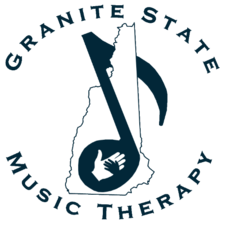The Three M’s of Stress Management
Happy Fall! It is that time of year again, folks. The kids are back in school, the holiday season is fast approaching, and stress is riding high. Let’s pause. Take a deep breath in through the nose, and out through the mouth. Feeling better? Now, let’s talk about stress management.
On a scientific level, stress activates the nervous system and contributes to disruptions in our immune function, sleep patterns, mental wellbeing, and physical health. There are a multitude of tools at our disposal to help us manage stress and counteract its negative impacts on our day to day functioning. My goal with this blog post is to highlight some tips and tricks to manage stress. Stress management looks different for everyone, so please take what resonates with you and leave what doesn’t.
1. Meditation:
To put it simply, meditation means to think deeply or carefully about something. This can look different for everyone, but it is dependent on the intention behind the action. Meditation can be done in silence, or with the aid of chanting or music. Grounding exercises are a form of meditation and a great way to manage stress. These are exercises that help us to reorient ourselves by encouraging us to focus on the present moment.
An example of a meditative grounding exercise is the box breath. In this exercise, you inhale, hold the breath, exhale completely, and hold the space for a predetermined set of counts. For example, inhale 4 seconds, hold 4 seconds, exhale 4 seconds, hold 4 seconds, and repeat this for 1-3 minutes. Set a timer so you are not focused on the clock, and try to identify how you are feeling before, during, and after. Another example of this might look like engaging the 5 senses to scan and identify 3-5 things you can hear, see, smell, taste, and touch in the space around you. This technique can easily be adapted for younger children by asking them to identify 3-5 objects of a certain color, size, or shape.
A different example of meditation is journaling. This too can look different for everyone. Maybe you prefer to write in a physical journal, but maybe you prefer to create a series of voice memos on your phone so that your journal is always with you. The intention behind the action of identifying and thinking deeply about what we are feeling is what defines something as meditative.
2. Movement:
Moving our bodies everyday is one of the best ways to care for ourselves. The key is finding ways to move our bodies that bring us joy. For a lot of people, this can be difficult. Thankfully, you don’t have to join a gym to start moving. Something as simple as a walk around the neighborhood, raking leaves in the yard, or even dancing for fun at home to your favorite songs is considered movement.
I will remind you that the intention behind the action is what matters. You don’t need the fanciest workout gear or the newest equipment to incorporate movement into your daily routine. Continuing to show up for yourself everyday by choosing to intentionally move your body is what counts!
3. Mindfulness:
In my opinion, this is the hardest of the 3 M’s. Mindfulness is a mental state that we can achieve by focusing on the present moment and acknowledging and accepting how we are feeling in that same moment. It is a practice that we must recommit to everyday. The more we actively practice mindfulness, the easier and more second nature it becomes. That being said, here is another gentle reminder that the intention behind the action is truly what matters.
An example of this might look like taking a moment to identify how you are feeling: is it a positive or negative experience? Then dig a little deeper to further identify what emotion you are feeling. Is it joyful and light? Is it sorrowful and heavy? Think about what is currently occurring in your life that could be contributing to the feeling and how you can honor it. In this example, journaling could be a meditative technique that assists in working through the feeling.
Unfortunately, stress is part of the universal human experience, but utilizing some of the techniques I have highlighted above can help us stand up to stress. Engaging in meditation, movement, and mindfulness is easier said than done, but every time we choose these practices, we choose ourselves. When we choose ourselves, we are more equipped to help those around us. Similarly to when the flight attendant requests that everyone put on their own oxygen mask before assisting others, we must fulfill our own needs first.
Author: Kelly Weaver, MT-BC
Editor: Cassadi Kulak, MT-BC






